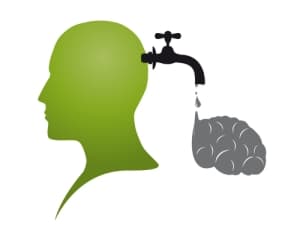Protecting Your Teaching Investment: Help Students Retain Knowledge While Away From School

By Katie Fitz
 For years, when school breaks drew to a close, educators were faced with the task of refocusing students suffering from the proverbial “brain drain” after weeks or months away from the classroom. Despite the best intentions of holiday reading lists and math worksheets, not to mention the lack of focus that can accompany the end of the semester or school year, students were returning to the classroom at a different point than they left.
For years, when school breaks drew to a close, educators were faced with the task of refocusing students suffering from the proverbial “brain drain” after weeks or months away from the classroom. Despite the best intentions of holiday reading lists and math worksheets, not to mention the lack of focus that can accompany the end of the semester or school year, students were returning to the classroom at a different point than they left.
The edtech evolution, however, has changed this trend. In a recent national survey, we found that 80 percent of schools are giving students access to educational technology from home, both during and in between school years. Schools are providing web-based learning programs so students can practice with engaging content when they aren’t in school by logging in remotely.
Kids, who are already spending time online when they’re out of school, can continue to practice and reinforce academic concepts through the same channels from which they seek entertainment and social interaction. Additionally, educators can easily monitor what’s been completed during time away from the classroom.
Some educators have harnessed the appeal of interactive solutions to encourage practice during holidays or summer months with competition. For example, we ran a Summer Academic Challenge in July in which more than 130 schools participated nation-wide. By the end of the challenge, 3,400+ students answered more than a half million questions throughout the month – especially impressive given it was summer time. The winning school, John F. Kennedy Middle School in Miami Beach, averaged 88.9 percent correct at a time when most students were thinking about anything but school.
Pundits suggest that the first wave of the Ed Tech revolution will actually have teachers adopting web-based tools to become more efficient in their jobs as a way of expanding their bandwidth. Because teachers are tasked with more to do in a day than is often possible, they’re leaning on teaching solutions that can reinforce concepts and track student progress. An unintended side effect is that web access also expands teaching opportunities to include any time away from school – nights, weekends, and holidays.
In addition to broader access to the Internet in the home, resources like The Khan Academy have helped catalyze the acceptance of self-paced learning through these online tools. With more than 3,000 videos, The Khan Academy addresses everything from arithmetic to physics, finance, and history. Now, a myriad of other solutions offer to do the same, aligning closely with Common Core and state standards to meet individual teacher’s needs as well.
Parents, for their part, have been empowered by home access with a greater opportunity to play a role in their child’s learning and practice. Instead of written homework that a parent has to review without the benefit of classroom instruction, online solutions come not only with the practice material, but also with the explanations and problem-solving suggestions for students, and parents, to work through concepts.
Ultimately, an effective web-based educational solution will:
- Be Accessible – Students should be able to log on with their unique details via their preferred device.
- Be Self-Explanatory – Since you aren’t there to walk your student through the lesson, ensure the solution offers explanatory videos and guidance for not only how to work through the lessons, but also how to work through wrong answers or more difficult concepts.
- Be Assessable – A great education solution will also have a way of showing the results and progress students have made. Being able to pull an individual student’s progress report allows the teacher to immediately assess where the student needs extra help or isn’t grasping a concept whether they’re in or out of the classroom.
- Be Engaging – “Brain drain” happens because students are bored or “over” material. Make sure you offer them a solution they’ll want to engage with so it’s a natural progression to log on when they aren’t compelled to do so.
- Be Flexible – Incentivize your students with something beyond their own knowledge skills. Run a contest to see who can answer the most questions, quiz them to see who has kept fresh on their concepts, and engage with them during time off to comment on the progress they’re making.
Ultimately, technology at home is a way for you to protect your teaching investment. The teachers we had when we were in school may have locked the door for the holidays with a wish in their heart that we would remember what they had spent so much time teaching us, but now we have more surefire tools at our disposal. Let’s use them and keep students on their “A+ game.”



0 Comments
Leave a Comment
Your email address will not be published. All fields are required.